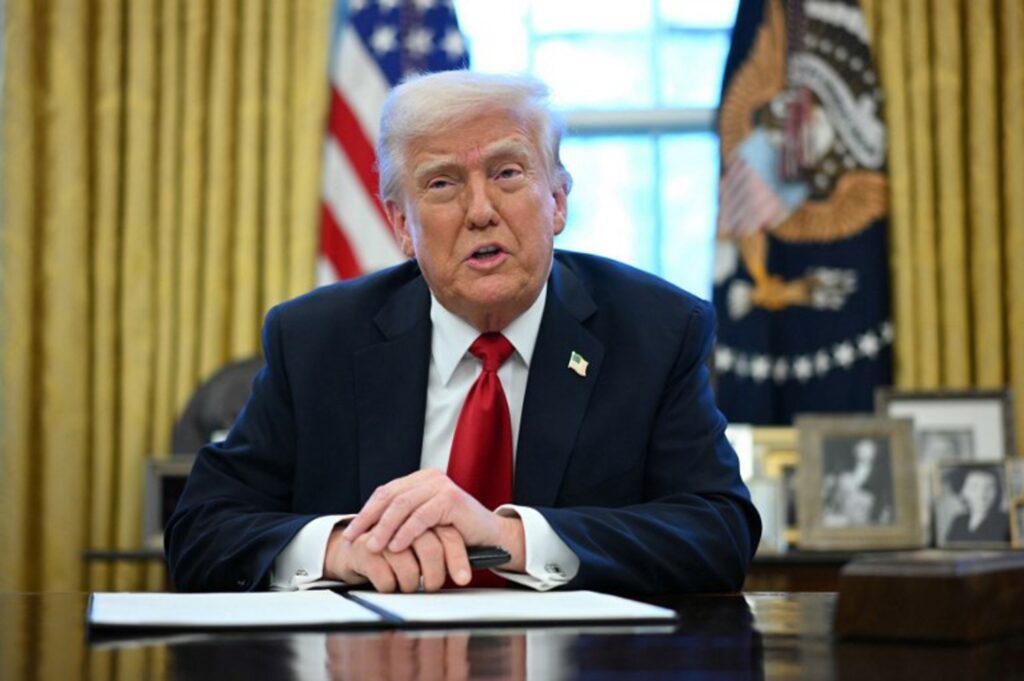In his first 100 days in the Oval Office, United States President Donald Trump has made the adage of tech gurus – and buddy Elon Musk – his own: 'move fast and break things'.
Into his second term (after four years off), Trump has seemingly learned from the mistakes of his first presidency – and is now trying to achieve all his goals simultaneously. The result: an avalanche of presidential decisions, measures and frequent turns, shaking American society to its foundations as the whole world scrambles to keep up.
From cutting US government administration, bringing in hardline immigration policy, upheaving the global economy and making threats to Greenland and Panama – no friends or foes have been spared in Trump's explosive second term.
Starting a trade war
Trump's historically high import tariffs have caused great turmoil in financial markets and the global trading system. On 2 April, Wall Street and European stock markets experienced the worst day in five years after Trump's announcement on 'Liberation Day'.
However, after a remarkable U-turn by the President, a 90-day pause came into force for dozens of countries, and the storm subsided for now.
Trump is convinced that import tariffs on goods are necessary to bridge the US trade deficit. He accuses trading partners of "unfair competition" through which they "steal" wealth from the country. It was not only the US rival China that suffered, but traditional allies like Canada and the European Union also came under the sights of Trump's trade war. In total, over 100 countries received additional tariffs. For some countries, this even involved import tariffs of 50%.
To calculate the tariffs, the Trump administration used a simple formula: the trade deficit divided by the total value of all imports from a given country, divided by two (because Trump said he still wanted to be "friendly"). That formula, however, contradicts the claim of "reciprocal tariffs."
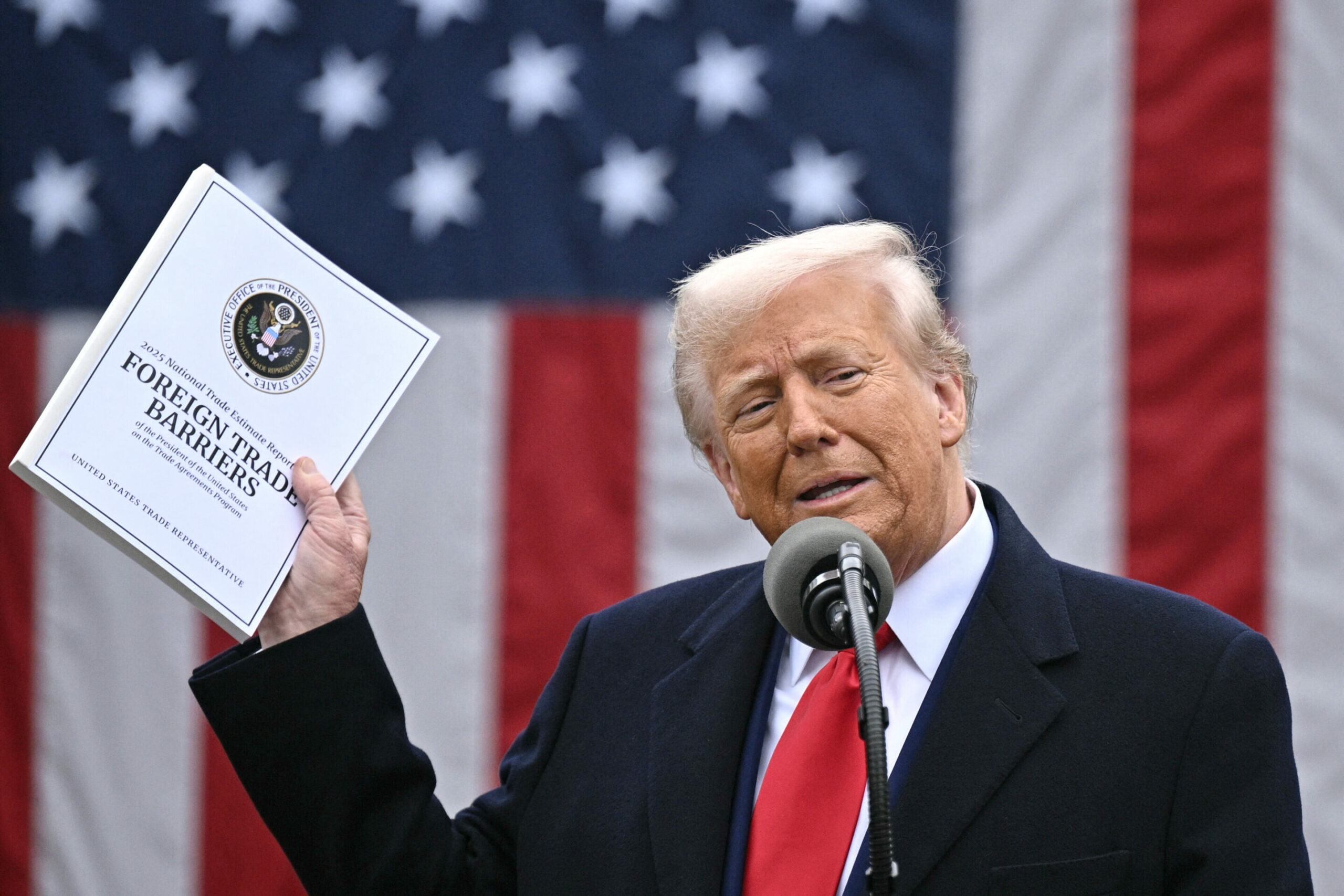
US stock markets were down on Easter Monday 2025 as Donald Trump continued his criticism of Federal Reserve Chair Jerome Powell. Credit: Belga / AFP
Additionally, countries with which the United States has a trade surplus were also imposed a 10% levy. Not even the uninhabited Heard and MacDonald Islands were spared the import levies.
The announcement of the "reciprocal tariffs" on 2 April sent shockwaves through financial markets worldwide. Originally, Trump and his closest aides insisted that tariffs would not be scaled back, but after stock markets and the dollar took a nosedive and US debt yields lept upwards, he changed his mind on 9 April: all tariffs would be suspended and replaced by a 10% universal tariff.
There were also exceptions for several electronic products, such as chips, smartphones and laptops. China, however, was an exception.
On top of the 20% tariffs already in place for China, Trump announced another 34% on his Liberation Day. China riposted with similar levies, causing Trump to raise them even more: from 84% to 125%, and eventually 145%. In turn, China levies 125% on US products.
In doing so, it also revealed that it would no longer respond to further increases because "at current tariff levels, there is no longer any possibility of marketing US goods exported to China." However, China did start tightening the screws in other areas: it halted exports of rare earth (an essential raw material for missiles and electric cars, among others) as well as all Boeing aircraft deliveries.
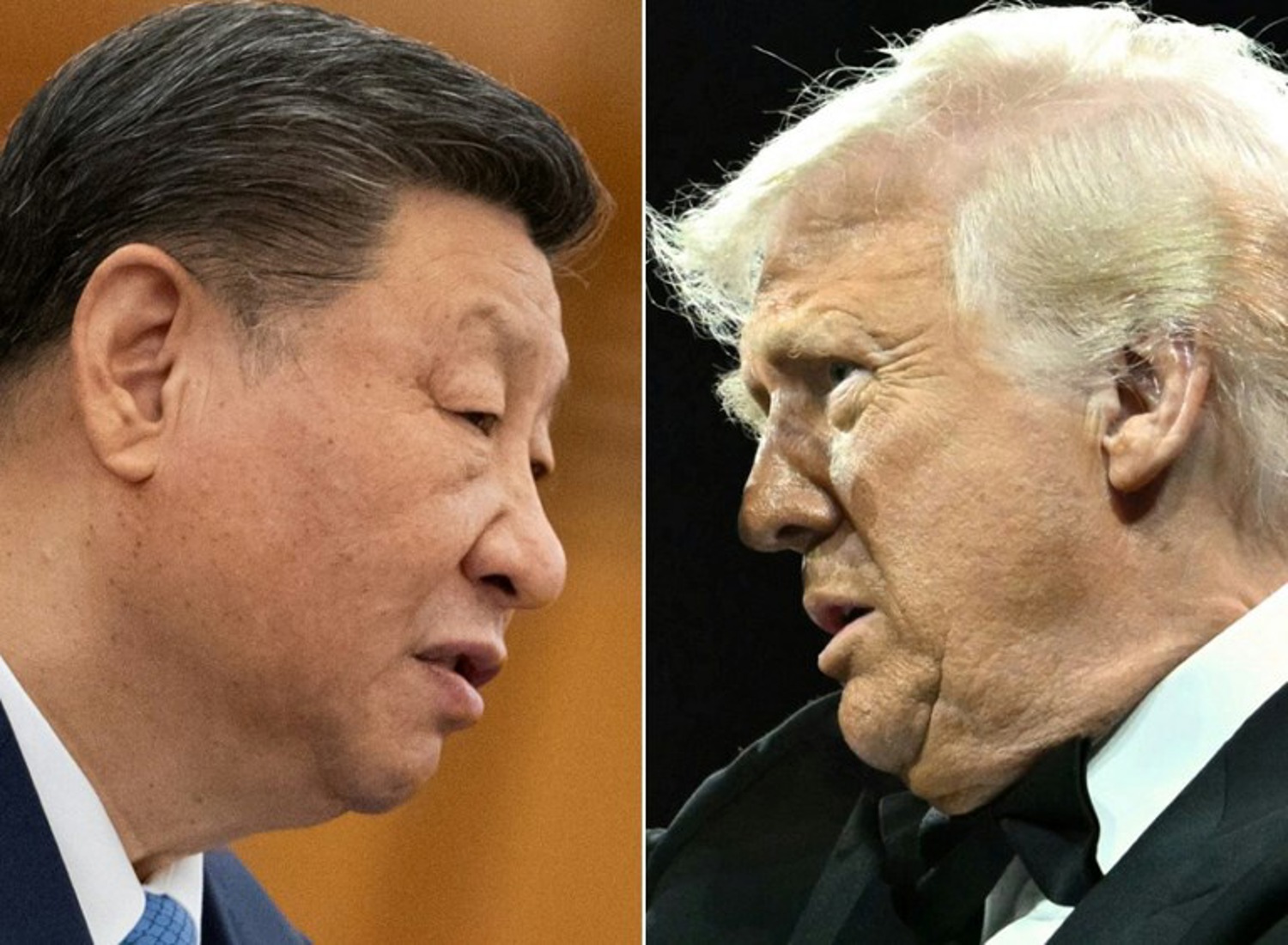
Chinese President Xi Jinping and US President Donald Trump. Credit: AFP
Mexico and Canada, important trading partners of the United States as well as neighbours, were largely spared the duty chaos. On two occasions, a 25% import tariff was briefly imposed on both countries for allegedly not doing enough to stop drug and human smuggling into the US. Each time, however, those levies were quickly suspended again (for the most part).
Besides import tariffs on specific countries, a 25% duty on aluminium and steel and the same tariff on cars and auto parts will apply for now.
Trump's flip-flopping has not done the stock markets much good: initial optimism following Trump's re-election and his re-entry into the Oval Office completely evaporated in recent weeks. Instead, fears of a recession are also growing globally. For Trump, tariffs may be "the nicest word in the dictionary," but many investors clearly think otherwise.
In any case, we have not heard the last of Trump's chaotic trade policy yet: indeed, some Democratic senators have asked the US stock market watchdog to investigate whether the president committed an offence by encouraging people to buy shares shortly before announcing his U-turn on import tariffs.
Haphazard foreign policy?
Predictably, Trump has dominated world news when it comes to changing US foreign policy. In particular, the American rapprochement with Russia, the tension within the transatlantic alliance and his controversial plans in Gaza continue to reverberate. Trump dreams out loud of the Nobel Peace Prize, but also threatens new conflicts over the Panama Canal and Greenland.
The US President was unable to fulfil his promise to end the Russian war in Ukraine in one day. He is seemingly frustrated because his peace negotiations are not working, but at the same time is not increasing the pressure on Russia.
However, he did put pressure on the Ukrainians to make a deal and in early March even paused all military aid to Ukraine until President Volodymyr Zelenskyy agreed to a 30-day ceasefire the following week. Russia rejected that agreement and imposed additional conditions.
The US decision to suspend aid to Ukraine came after the much-discussed clash between Trump and Zelenskyy in the White House. During the tense conversation, US Vice-President JD Vance stoked the fire by wondering whether Zelenskyy had ever said "thank you" during the meeting. The US president accused his guest of being disrespectful and ungrateful in front of journalists and cameras.
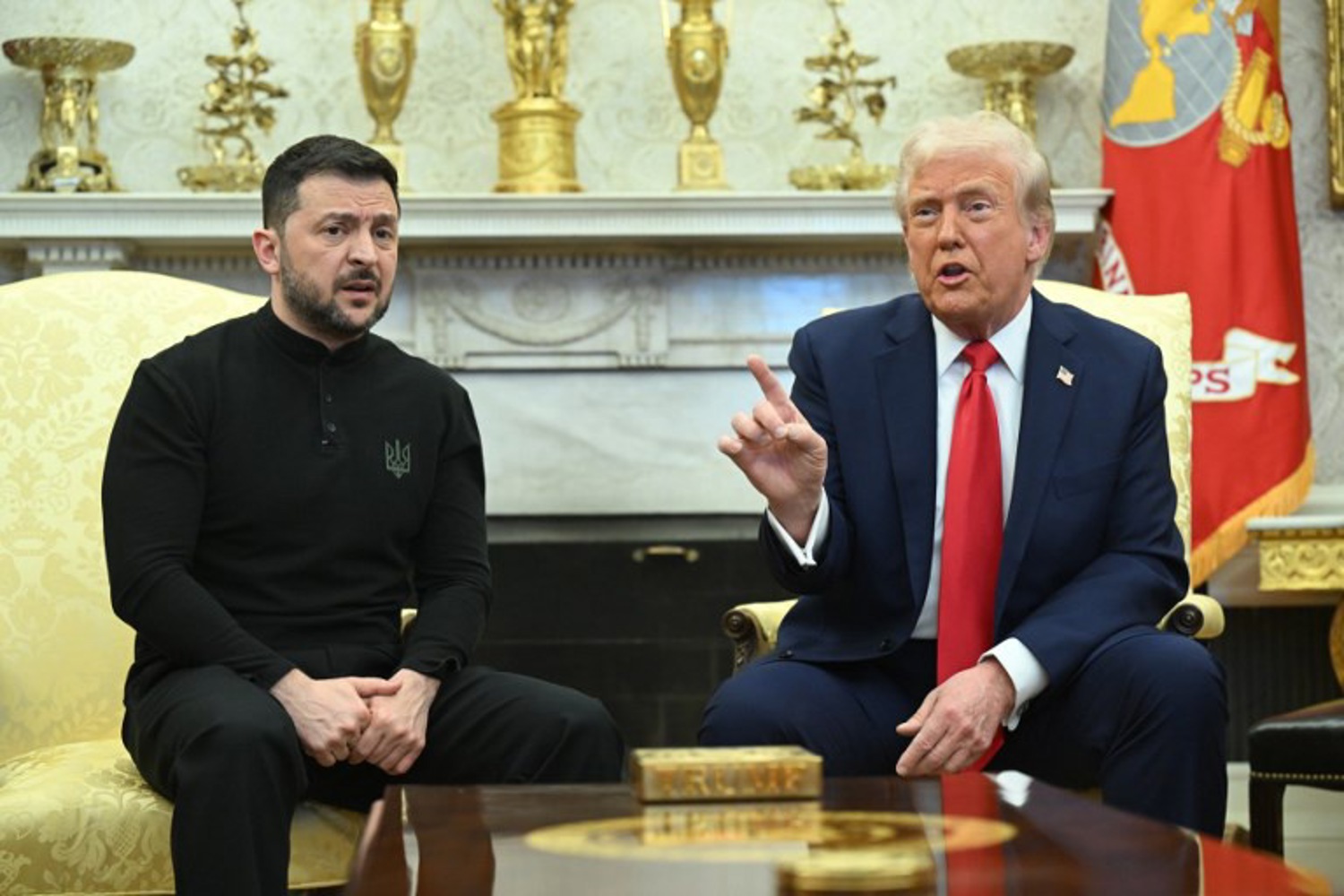
US President Donald Trump and Ukraine's President Volodymyr Zelenskyy meet in the Oval Office of the White House in Washington DC, 28 February 2025. Credit: Belga / AFP
Trump had previously called his Ukrainian counterpart a "dictator without elections," while Zelenskyy accused the US president of living in a "bubble of Russian disinformation." Moreover, Trump has accused Ukraine several times of starting the war, even though Russia's first aggression began in 2014, before the full-scale invasion in February 2022.
The intention was for a raw materials deal between the two countries to be signed during Zelenskyy's visit to Washington. Trump sees this as compensation for the military aid that Ukraine has received since the Russian invasion. The plan was postponed, as was the Ukrainian demand for American security guarantees after a possible peace agreement. With a new version of the agreement, the US wants to gain control over important future investments in infrastructure and raw materials in Ukraine.
The relationship between Kyiv and Washington has been tense in recent months, because Trump is prepared to give in to Russian President Vladimir Putin's demands to end the war. The Russians want, among other things, the four annexed Ukrainian provinces to go to Russia – which is unacceptable to the Ukrainians. Therefore, Trump's peace mission is a failure for the time being. A meeting between Zelenskyy and Trump in Rome at Pope Francis' funeral on Saturday has spurred hopes that relations have improved.
In recent months, the United States has sought rapprochement with Russia in various ways. In addition to the two publicly announced telephone conversations between Trump and Putin, Washington has also literally reached out to the Russians. US Secretary of State Marco Rubio spoke with his Russian colleague Sergey Lavrov in February, while US envoy Steve Witkoff met Putin for a third time earlier this month.
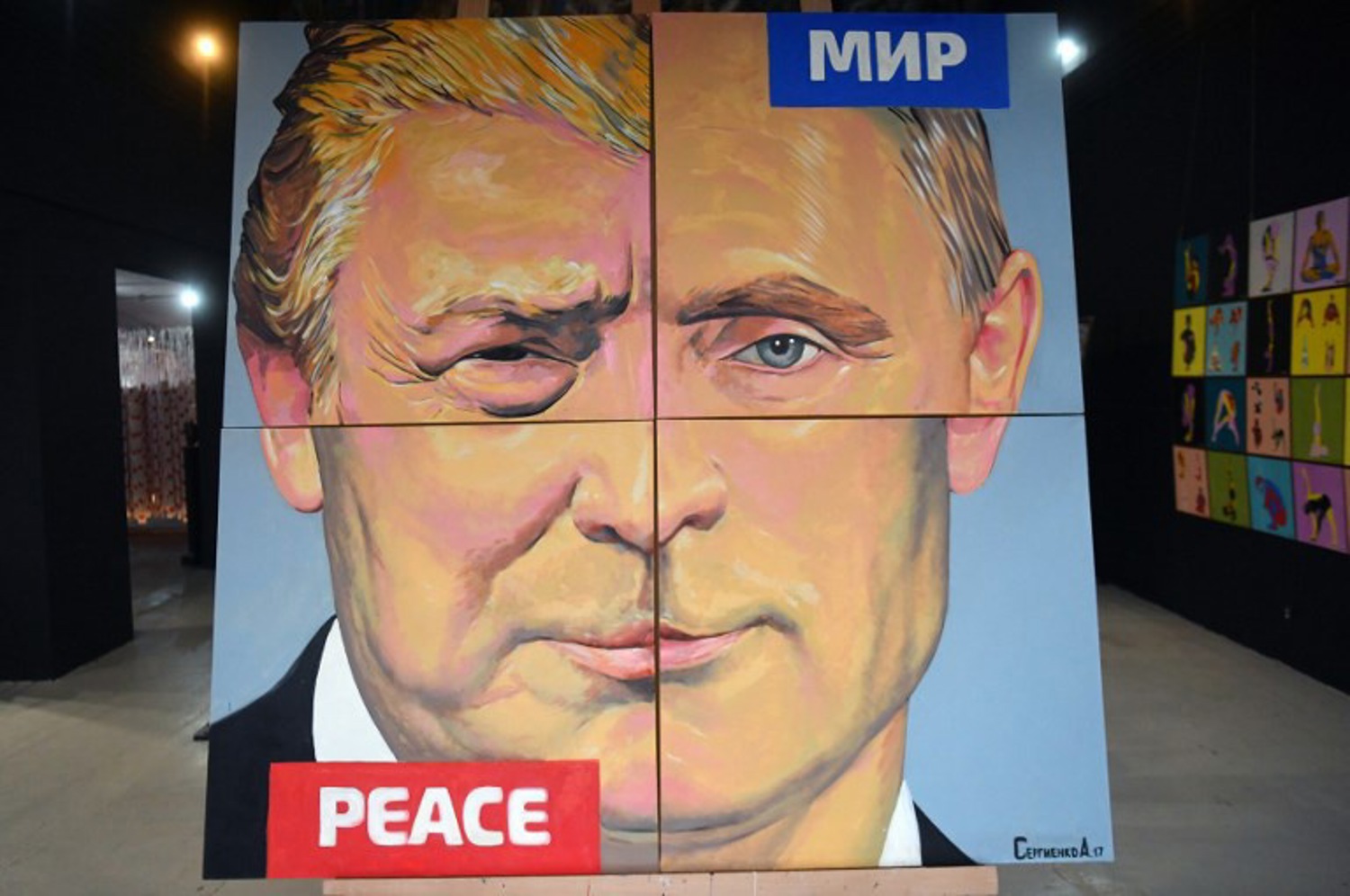
Russian artist Alexey Sergienko's painting "Peace to the Peace" depicting Russian President Vladimir Putin and US President Donald Trump in the Sergienko Gallery in Saint Petersburg on 12 March 2025. Credit: Belga / AFP
Less than a month after Trump moved into the White House, Vice-President Vance also caused quite a stir at the Munich Security Conference. In his speech, Vance criticised the EU, while suggesting that the dangers to Europe come from within and criticising the "censorship" and "mass migration" in European countries.
This evolution, as well as the rapprochement with Russia, was a real wake-up call for the EU, which realised that it had to stand on its own two feet more than ever. The EU rolled up its sleeves and came up with an €800 billion arms plan; higher defence spending is high on the agenda in many European countries. "President Trump and Vice-President JD Vance have achieved what no other politician has ever managed: a truly united Europe," wrote Time Magazine in early April.
It did not end there: Trump's peace plans for the Middle East have also not materialised. The people in Gaza briefly regained hope from the fragile ceasefire that had come into effect the day before Trump’s inauguration. However, it was once again broken by Israel on 18 March, with the humanitarian crisis at its worst, according to the UN. The death toll in the Palestinian coastal strip is more than 50,000.
In early February, Trump had proposed placing the war-torn Gaza Strip under US control and turning it into a "Middle Eastern Riviera" by expelling its 2.4 million inhabitants to neighbouring Jordan and Egypt. In response to Trump's proposal, Egypt came up with a five-year $53 billion plan to rebuild Gaza. Trump also shared an absurd AI video depicting the Gaza Strip as a luxury resort, complete with a golden statue of himself.
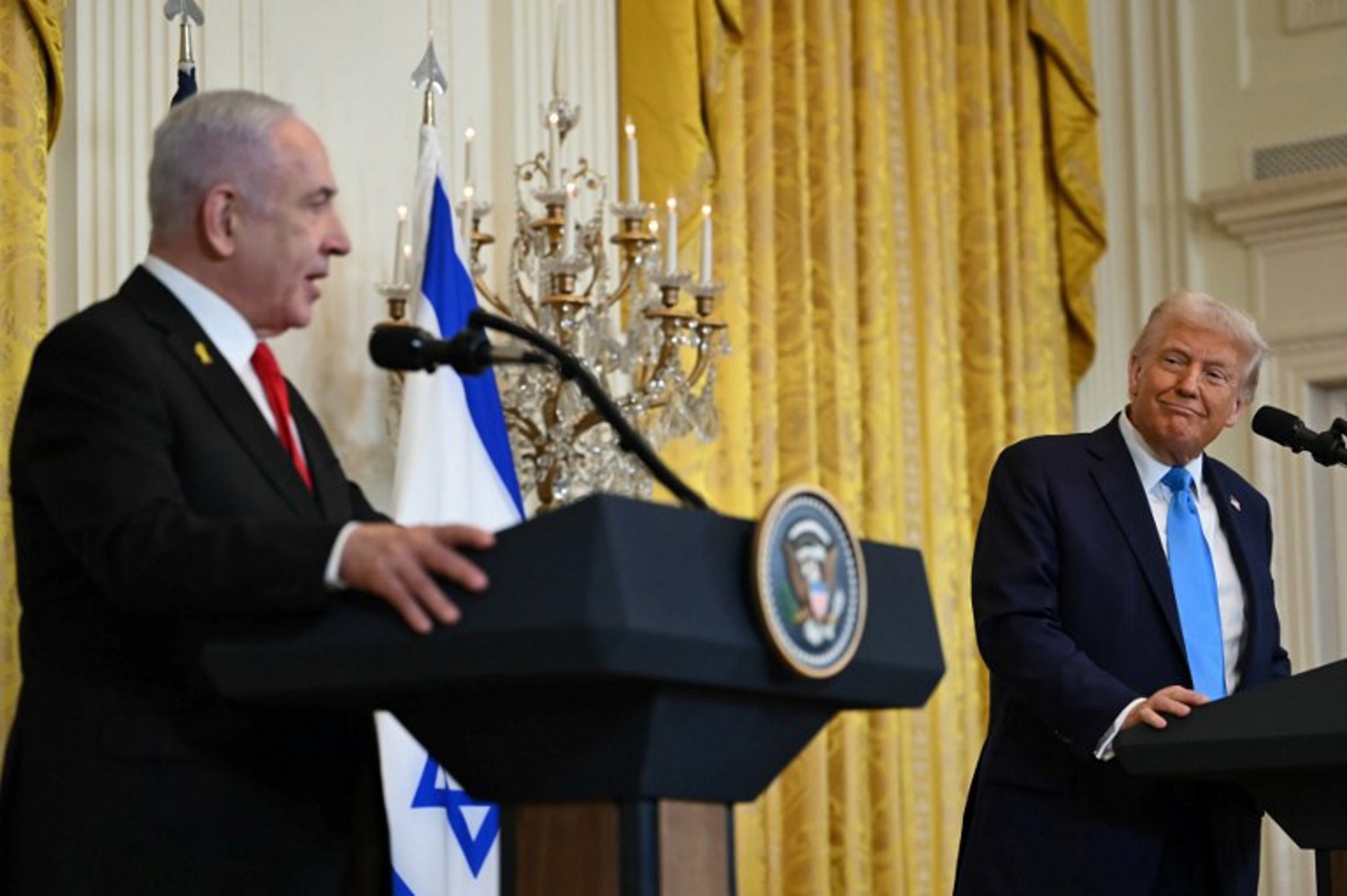
US President Donald Trump listens to Israel's Prime Minister Benjamin Netanyahu during a press conference at the White House on 4 January 2025. Credit: Andrew Caballero-Reynolds / AFP/ Belga
Meanwhile, the US, together with Egyptian mediators, is working on a new ceasefire to free the remaining Israeli hostages in the Gaza Strip. The US-Israel alliance remains close under Trump, with Israeli Prime Minister Benjamin Netanyahu visiting in February as the first foreign guest of his second term.
Earlier this month, the US also began negotiations with Iran on a new nuclear deal. Trump said Iran must give up its dream of nuclear weapons or risk US attacks on military and nuclear sites. In 2018, Donald Trump unilaterally withdrew his country from the international nuclear agreement with Iran and reimposed sanctions.
Despite local resistance, Trump continues to repeat that the United States wants control over Greenland and the Panama Canal. While Greenland is resolutely holding off, Panama gave the green light earlier this month for American troops in the access zones and adjacent areas of the important canal.
Secretary of State Rubio admitted in January that Trump's expansion plans are a result of China's growing influence in the far north and Latin America.
The US President clearly charts his own course in international politics, often against the tide. On the day he was sworn in, Trump signed decrees to withdraw from the World Health Organisation (WHO) and the Paris Climate Agreement. He also decided to break with the United Nations Human Rights Council. Under Trump's motto "peace through strength," the UN must limit itself to maintaining international peace and security.
On Tuesday 29 April, Trump is just 100 days into his new term. 1,361 days to go.
Democrats mobilise
To mark Trump's first 100 days, Democrats Abroad Belgium is sounding the alarm and mobilising action. "Stateside and abroad, Americans are rising up to resist Trump’s authoritarian vision and to defend the democracy we hold dear."
"Over the past three months, we have witnessed escalating threats to the rule of law, attempts to dismantle federal agencies, renewed attacks on reproductive rights and birthright citizenship, the cancellation of over 80% of USAID contracts, and pledges to weaponise the government against political opponents," they said.
Robin de Wouters, Chair of Democrats Abroad Belgium, called Trump's rhetoric no longer just dangerous, but "a clear and present threat to American democracy and world stability."
In response, Democrats Abroad has joined a coordinated campaign of peaceful protest, voter registration drives, and grassroots organising under the banner of #HandsOffOurDemocracy – activating Americans overseas to vote, speak out, and fight back.
"Donald Trump has made his intentions clear – he plans to take a wrecking ball to the pillars of our democracy," said de Wouters. "We are not waiting for next year's midterm elections to sound the alarm. We are organising now to stop him."

